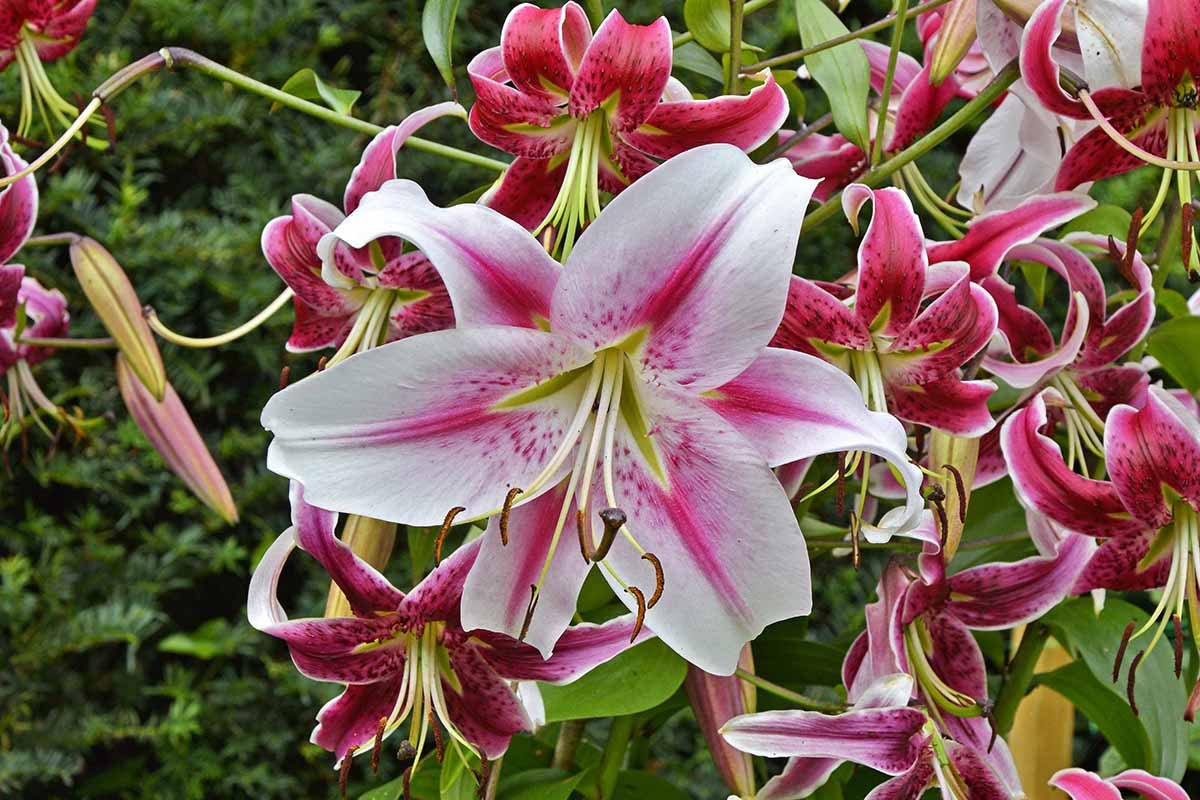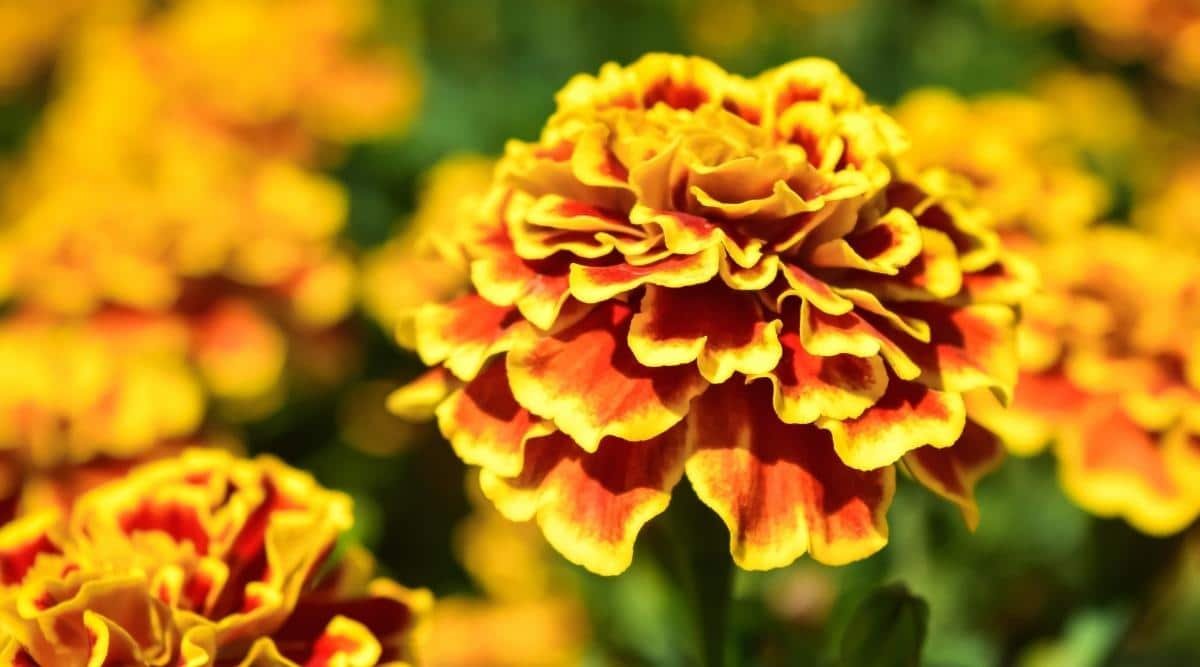Lily Flower Facts, FAQs, Uses, Cultivation, Botany, Significance and more
 Lily Flower Facts
Lily Flower FactsLily Flower Facts | Description | Distribution and Habitat | Botany and evolution | Cultivation | Uses | Cultural | Interesting facts | frequently asked questions about Lily
Welcome to the beautiful world of lilies, where elegance and beauty converge in a single bloom. Lilies are a popular flower choice for many occasions, from weddings to funerals and everything in between. With their stunning colors and unique petal shapes, lilies are a favorite among flower enthusiasts worldwide. From the pure white elegance of the calla lily to the vibrant orange hues of the tiger lily, these flowers have something for everyone. Join us as we explore the fascinating world of lilies, their meanings, symbolism, and how they have been used throughout history to express love, devotion, and more. Discover the magic of these stunning blooms and be captivated by their beauty and grace..
Taxonomy of Lily
| Kingdom | Plantae |
|---|---|
| Clade | Angiosperms |
| Clade | Monocots |
| Order | Liliales |
| Family | Liliaceae |
| Genus | Lilium |
Note: The taxonomy of the flower lily is subject to change as scientific classification is continuously updated based on new information and research.
Morphology of Lily
| Feature | Description |
|---|---|
| Flower type | Single flower or clustered in inflorescence |
| Flower size | 5-20 cm in diameter |
| Flower shape | Bell-shaped or trumpet-shaped with 6 petals and 6 stamens |
| Petal color | Varies by species, including white, pink, yellow, orange, red |
| Leaf type | Linear or lanceolate with parallel veins |
| Leaf arrangement | Whorled or alternate |
| Stem height | Varies by species, up to 2 meters in height |
| Root system | Bulbous root system |
Note: The morphology of the flower lily can vary by species, and not all lilies will have the same features listed above.

Description of Lily
The rose is a perennial flowering plant that belongs to the Rosaceae family, and is widely known for its beauty, fragrance, and symbolism. With over 100 species and thousands of cultivars, roses come in a vast array of colors, sizes, and shapes. The typical rose flower has five petals, although some cultivars can have up to 100 petals. The petals are soft and velvety, and can be white, yellow, pink, red, orange, or purple, depending on the cultivar. The sepals, which are located underneath the petals, are typically green and leaf-like.
The rose flower also has multiple stamens, which consist of a filament and an anther at the end. The pistil, which is the female reproductive part of the flower, consists of a stigma, a style, and an ovary. The ovary contains the ovules, which become the seeds after fertilization.
Roses are typically arranged in a single, large flower at the end of a stem, but can also be found in clusters or sprays of smaller flowers. The leaves of a rose plant are typically compound, with several leaflets arranged along a central stalk. The stem of the rose plant is typically woody or thorny, with alternate leaves that attach directly to the stem. The root system of the rose plant typically consists of a deep taproot with several smaller lateral roots.
Overall, the rose is a complex and diverse flowering plant that has captured the hearts of people around the world for centuries, both for its physical beauty and its symbolic meaning.
Distribution and habitat of Lily
Lilies are a widely distributed group of flowering plants, with species found in many parts of the world. They are found across North America, Europe, and Asia, as well as in some parts of South America and Africa.
The specific habitats of lilies vary depending on the species, but they are typically found in temperate regions with moderate temperatures and adequate moisture. Some lilies are adapted to drier conditions, while others prefer wet or marshy habitats.
In North America, lilies can be found in a variety of habitats, including meadows, forests, and wetlands. In Europe, they are often found in mountainous areas or near water sources, while in Asia, they are found in a range of habitats, from deserts to alpine meadows.
Some species of lilies have also been introduced to new regions outside of their native range, either intentionally or accidentally. These introduced species can sometimes become invasive, outcompeting native plants and altering local ecosystems.
Overall, lilies are a diverse group of plants with a wide distribution and adaptability to different environmental conditions. They can be found in a variety of habitats around the world, and their beauty and unique characteristics have made them a beloved part of many cultures and gardens.
Botany and evolution of Lily
Lilies are a type of flowering plant that belongs to the family Liliaceae. They are classified as monocots, which means they have a single cotyledon (embryonic leaf) in their seed. Lilies are part of the order Liliales, which includes several other families of flowering plants.
The evolution of lilies can be traced back to the Early Cretaceous period, approximately 110 million years ago. Fossil evidence suggests that lilies were present during this time, and their evolution is believed to have been influenced by changes in the Earth’s climate and geography.
The modern lily plant is characterized by its bulbous root system, which allows it to store energy and nutrients for periods of dormancy. The stem of the lily plant can range in height from just a few centimeters to several meters, depending on the species. The leaves of the lily are typically long and narrow, with parallel veins.
Lilies reproduce through sexual reproduction, with flowers serving as the reproductive structures. The flowers of the lily are hermaphroditic, containing both male and female reproductive structures. Pollination occurs when insects or other animals transfer pollen from the anthers (male structures) to the stigma (female structure) of the flower.
Over time, lilies have diversified into a wide range of species, each with its own unique characteristics and adaptations to different environmental conditions. Some lilies have even evolved specialized relationships with particular pollinators, such as moths or hummingbirds.
In summary, lilies are a diverse and fascinating group of flowering plants that have evolved over millions of years to adapt to different environmental conditions. Their bulbous root system, long narrow leaves, and hermaphroditic flowers are just some of the features that make them unique. Their evolution and diversification continue to be the subject of study and fascination for botanists and plant enthusiasts alike.
Cultivation of Lily
Lilies are popular flowering plants that are cultivated for both ornamental and commercial purposes. Growing lilies can be relatively easy, as long as certain guidelines are followed.
The first step in growing lilies is to select a suitable location. Lilies prefer a well-drained soil that is rich in organic matter. They also require full sun or partial shade, depending on the species. In general, lilies grow best in cool, temperate climates.
Lilies are typically propagated through bulbs, which can be purchased from nurseries or garden centers. Bulbs should be planted in the fall, before the first frost, to allow them time to establish roots before winter. The depth and spacing of bulbs will depend on the species, but as a general rule, bulbs should be planted two to three times their own depth.
Lilies require regular watering, especially during their growing season. However, they should not be overwatered, as this can lead to root rot. Fertilizer can also be applied during the growing season to help promote healthy growth and blooming.
One of the most important aspects of lily cultivation is pest and disease management. Lilies are susceptible to a range of pests, including aphids, mites, and slugs, which can damage the leaves and flowers. Fungal diseases can also be a problem, especially in humid conditions. Regular monitoring and appropriate treatment can help prevent pest and disease issues.
Lilies can be used in a variety of ways, from garden borders and containers to cut flower arrangements. With proper care and attention, lilies can provide years of beauty and enjoyment.
Uses of Lily
Lilies have been valued for their beauty and symbolism for centuries and are used in a variety of ways for both ornamental and cultural purposes.
One of the most common uses of lilies is in floral arrangements. Their unique petal shapes and colors make them a popular choice for wedding bouquets, centerpieces, and other special occasions. Lilies are also a popular cut flower, often used in arrangements to add color and elegance to any room.
In many cultures, lilies have symbolic meaning. For example, in Christian traditions, the white lily is often associated with the Virgin Mary and represents purity and innocence. In China, lilies symbolize good luck and prosperity, while in ancient Greece, they were associated with the goddess Hera and represented feminine beauty.
Lilies also have a long history of medicinal use. Some species of lilies contain alkaloids that have been used in traditional medicine to treat a variety of ailments, including respiratory and gastrointestinal problems. However, it is important to note that not all species of lilies are safe for human consumption and should not be used without proper guidance from a healthcare professional.
In addition to their cultural and medicinal uses, lilies are also important in the horticultural industry. Many species of lilies are cultivated for their ornamental value, and new varieties are constantly being developed to meet consumer demand.
Overall, lilies are a versatile and valued flower that are used in a variety of ways. From their beauty and symbolism to their medicinal and horticultural uses, lilies have captured the hearts and imaginations of people around the world for centuries.
Cultural and Historical Significance of Lily
Lilies have a rich cultural and historical significance, with references to their beauty and symbolism found in many different cultures throughout history.
In ancient Greece, lilies were associated with the goddess Hera and were believed to have grown from the milk of the goddess. They were also considered a symbol of fertility and were often depicted in artwork and architecture.
In Christianity, the white lily is often associated with the Virgin Mary and represents purity and innocence. The lily is also a symbol of the resurrection and is often used in Easter celebrations and decorations.
In Chinese culture, lilies are believed to bring good luck and prosperity. They are often used in weddings and other celebrations to symbolize happiness and good fortune.
In Japan, lilies are associated with death and are often used in funeral arrangements. They are also believed to ward off evil spirits and are sometimes used in exorcism rituals.
In addition to their cultural significance, lilies have also played an important role in human history. Some species of lilies have been used in traditional medicine for centuries, and lily bulbs were once a food source during times of famine.
Lilies also played a role in the Dutch tulip mania of the 17th century, when rare and exotic lilies were highly prized and traded for exorbitant prices.
Overall, lilies have captured the hearts and imaginations of people around the world for centuries. Their beauty and symbolism have made them an important part of many different cultures, and their historical significance and uses continue to be explored and celebrated to this day.
Explanatory Notes for Lily
Explanatory notes are a type of writing that provides additional information or context about a particular subject. Here are some possible explanatory notes for the flower lily:
- Lilies are a type of flowering plant that belongs to the family Liliaceae. This family includes many other types of plants, such as onions, garlic, and asparagus.
- The bulbous root system of lilies allows them to store energy and nutrients for periods of dormancy. This helps them to survive in a wide range of environmental conditions.
- Lilies are often grown for their ornamental value and are used in a variety of ways, such as in floral arrangements or as cut flowers.
- Some species of lilies contain alkaloids that have been used in traditional medicine to treat respiratory and gastrointestinal problems. However, it is important to note that not all species of lilies are safe for human consumption.
- Lilies have symbolic meaning in many different cultures, such as representing purity and innocence in Christianity or good luck and prosperity in Chinese culture.
- The cultivation and breeding of lilies is an important industry, with new varieties constantly being developed to meet consumer demand.
- Lilies can be susceptible to pest and disease issues, and regular monitoring and appropriate treatment can help prevent these problems.
- The evolution and diversification of lilies over millions of years continue to be the subject of study and fascination for botanists and plant enthusiasts alike.
Overall, explanatory notes can provide readers with a deeper understanding of the fascinating world of lilies, from their cultural significance to their botany and evolution.
Interesting facts about Lily
Here are 10 interesting facts about the flower lily:
- The lily is the birth flower for the month of May.
- Lilies come in many colors, including white, yellow, orange, pink, red, and purple.
- The largest lily in the world is the Rafflesia arnoldii, which can grow up to 3 feet in diameter.
- Some species of lilies are highly fragrant, while others have little to no scent.
- Lilies were highly prized in ancient Rome, and were often used in religious ceremonies and festivals.
- In medieval times, lilies were used as a symbol of royalty and were often depicted in artwork and heraldry.
- Some species of lilies are toxic to pets, such as cats, and can cause serious health issues if ingested.
- Lilies are used in many different cuisines around the world, including in Chinese and Japanese cuisine.
- The tiger lily (Lilium lancifolium) is the national flower of North Korea.
- The Madonna lily (Lilium candidum) is mentioned in the Bible as a symbol of purity and was once believed to have medicinal properties.
General queries or frequently asked questions about Lily
What is the best time to plant lily bulbs?
The best time to plant lily bulbs is in the fall, before the first frost. This allows the bulbs time to establish roots before winter.
Do lilies prefer sun or shade?
Lilies prefer full sun or partial shade, depending on the species. In general, they grow best in cool, temperate climates.
How often should I water my lilies?
Lilies require regular watering, especially during their growing season. However, they should not be overwatered, as this can lead to root rot.
What pests and diseases are common in lilies?
Lilies can be susceptible to a range of pests, including aphids, mites, and slugs. Fungal diseases can also be a problem, especially in humid conditions.
Are all species of lilies safe for pets?
No, some species of lilies are toxic to pets, such as cats, and can cause serious health issues if ingested. Pet owners should be aware of the potential risks and keep their pets away from lilies.
What is the symbolism of lilies in different cultures?
Lilies have different symbolic meanings in different cultures. For example, in Christianity, the white lily is often associated with the Virgin Mary and represents purity and innocence. In China, lilies symbolize good luck and prosperity.
Can lilies be used in cooking?
Yes, lilies are used in many different cuisines around the world, including in Chinese and Japanese cuisine.
How long do lilies typically bloom?
The blooming period for lilies can vary depending on the species, but typically lasts for several weeks.
Can lilies be grown in containers?
Yes, lilies can be grown in containers, as long as the container is large enough to accommodate the bulb and allows for adequate drainage.
Are lilies expensive to purchase?
The cost of lilies can vary depending on the species and availability. Some rare and exotic species may be more expensive, while more common varieties may be more affordable.
Conclusion
In conclusion, lilies are a diverse and fascinating group of flowering plants with a rich history and cultural significance. They are found in many parts of the world and have adapted to different environmental conditions. Lilies are popular for their beauty and are used in a variety of ways, such as in floral arrangements, as cut flowers, and in cooking. They have also played an important role in human history, with some species used in traditional medicine and as a food source. However, it is important to note that not all species of lilies are safe for human consumption and can be toxic to pets. Lilies have symbolic meaning in many different cultures, representing purity, good luck, and prosperity. Growing lilies can be relatively easy, as long as certain guidelines are followed, such as selecting a suitable location, planting bulbs at the appropriate time, and monitoring for pest and disease issues. Overall, lilies are a beautiful and fascinating plant that continue to capture the hearts and imaginations of people around the world.












